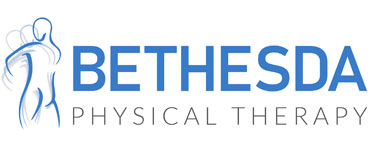Ankle Sprains
What is an Ankle Sprain?
Ankle sprains occur when the foot twists, rolls or turns beyond its normal range of motion. An ankle sprain can happen if the foot is planted unevenly on a surface. This places the ankle in an abnormal position causing the ligaments to stretch beyond normal range. Most ankle sprains occur when a weight-bearing foot makes a quick shifting movement, such as when you are playing sports or land incorrectly on an uneven surface.
Common Symptoms of an Ankle Sprain
Most of the time pain, swelling and bruising occurs immediately at the site of the sprain. The ankle area will also be tender to the touch and will hurt when moved. In more severe sprains, a popping or snapping noise may be heard. Initially, the pain will be more extreme and will result in the inability to put weight/pressure on the affected joint.
How We Treat Ankle Sprains
Rest, ice, compression and elevation (RICE) is the most effective way to treat initial symptoms of an ankle sprain. RICE is recommended 24-48 hours after a sprain. A physician or physical therapist can decide if crutches are also needed to protect the ankle while it is healing.
The goal of a physical therapist is to get patients back to daily activities. Without proper rehabilitation, continued problems such as loss of function, decreased movement, chronic pain, swelling and joint instability could arise.
Your physical therapist will select from the following treatments:
- Range-of-motion and/or muscle strengthening exercises
- Body awareness and balance training: specialized training exercises to help muscles learn to respond to the changes in the environment, such as uneven or unstable surfaces
- Functional training: progression in treatment to include daily living activities that were being performed prior to the injury
- Activity-specific training: specific training tailored to occupation and/or daily activities (i.e. sports)
- Modalities to treat the pain and swelling (i.e. ultrasound, iontophoresis, electrical stimulation, ice)
- Manual therapy to regain normal joint mobility
- Joint protection strategies (i.e. taping, bandaging)
*Services are not available at all locations. Call or click the location page near you for that center’s services.
What to Expect
Every patient has a unique health history, diagnosis and personal goals. When you come for your first appointment, we will create a personalized treatment plan for you.
We work with most major insurance providers and do our best to help keep the paperwork pain-free. If you’d like to confirm your insurance coverage, please let us know and we can verify when you schedule. If your insurance provider requires a co-pay, we will ask for this payment at each visit. We accept payments by cash, check or credit card.
When to Arrive
On average, a patient’s first visit lasts about an hour. We typically ask patients to arrive 15 minutes early to sign-in, complete paperwork and/or change clothes.
What to Bring
On your first visit, you’ll need to bring your physician referral or prescription (if needed), your insurance card, your primary registration forms, your ID or driver’s license and your co-payment (as applicable). If desired, you may bring a change of clothing.
How it Works
During your first visit, your physical therapist will do an initial evaluation and discuss your plan of care. The therapist uses this information to set goals for your continued treatment. Physical therapy goals may include improved movement, strength, endurance and flexibility, as well as decreased pain. Your subsequent visits will focus on treatment that is based on your diagnosis and individualized goals.
